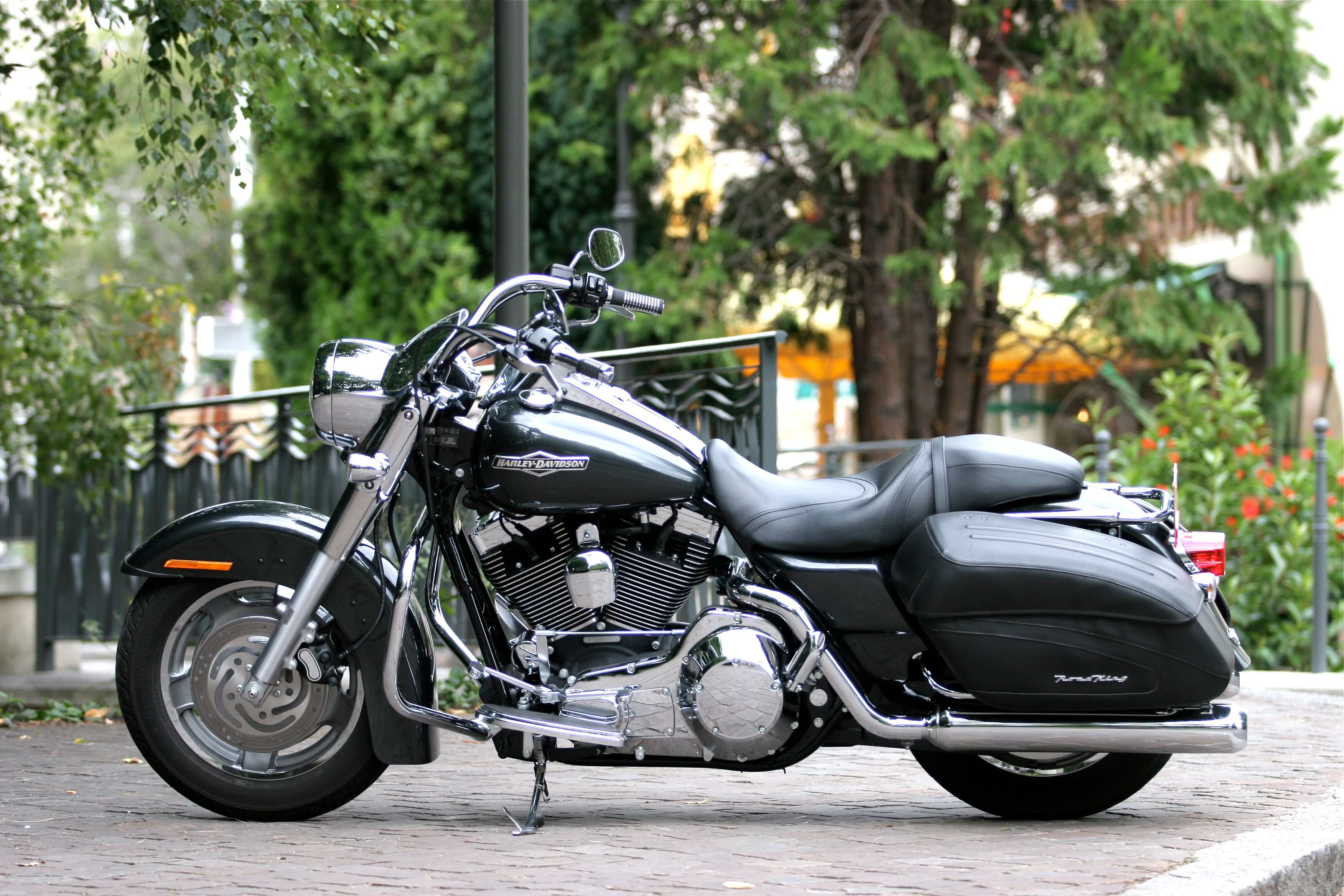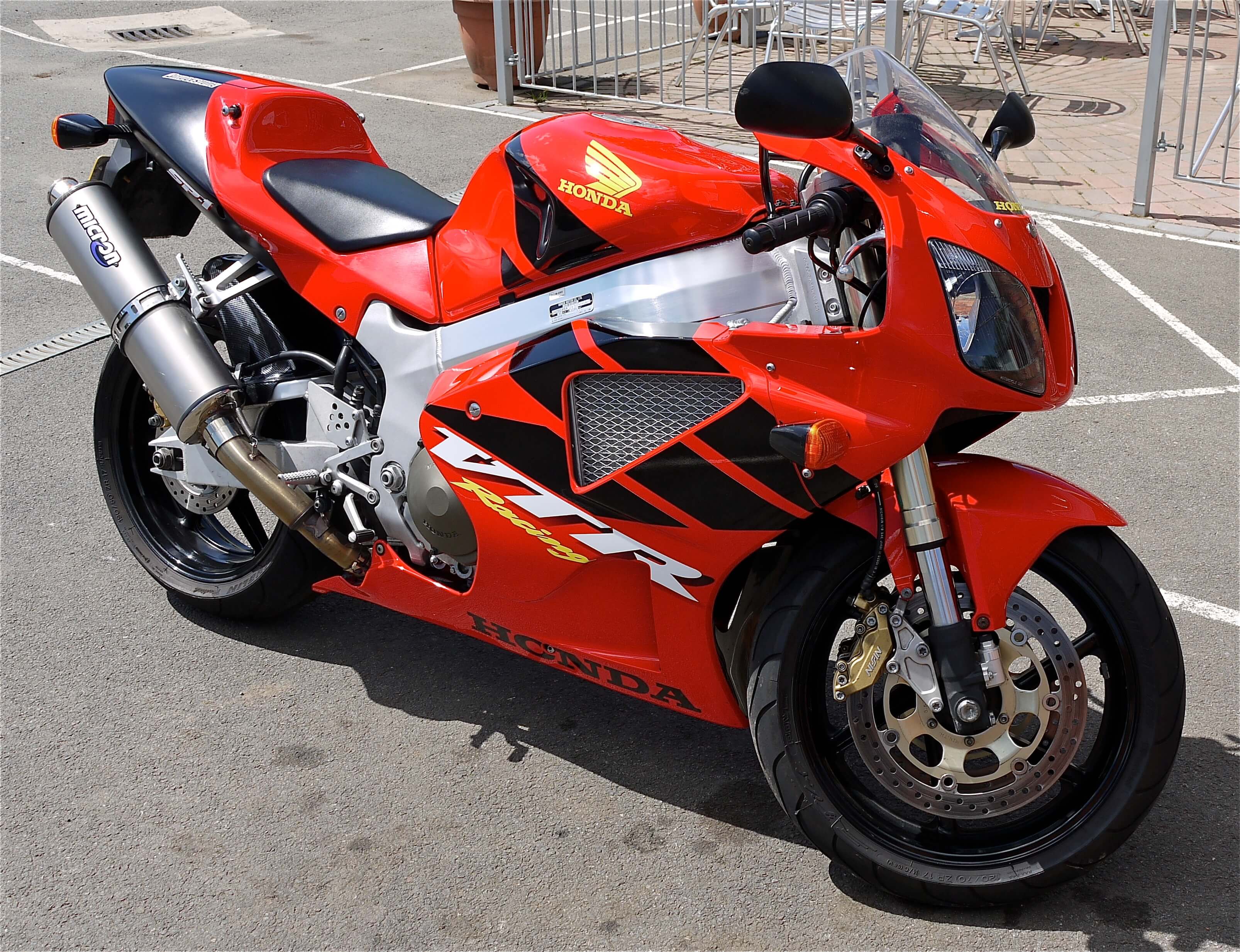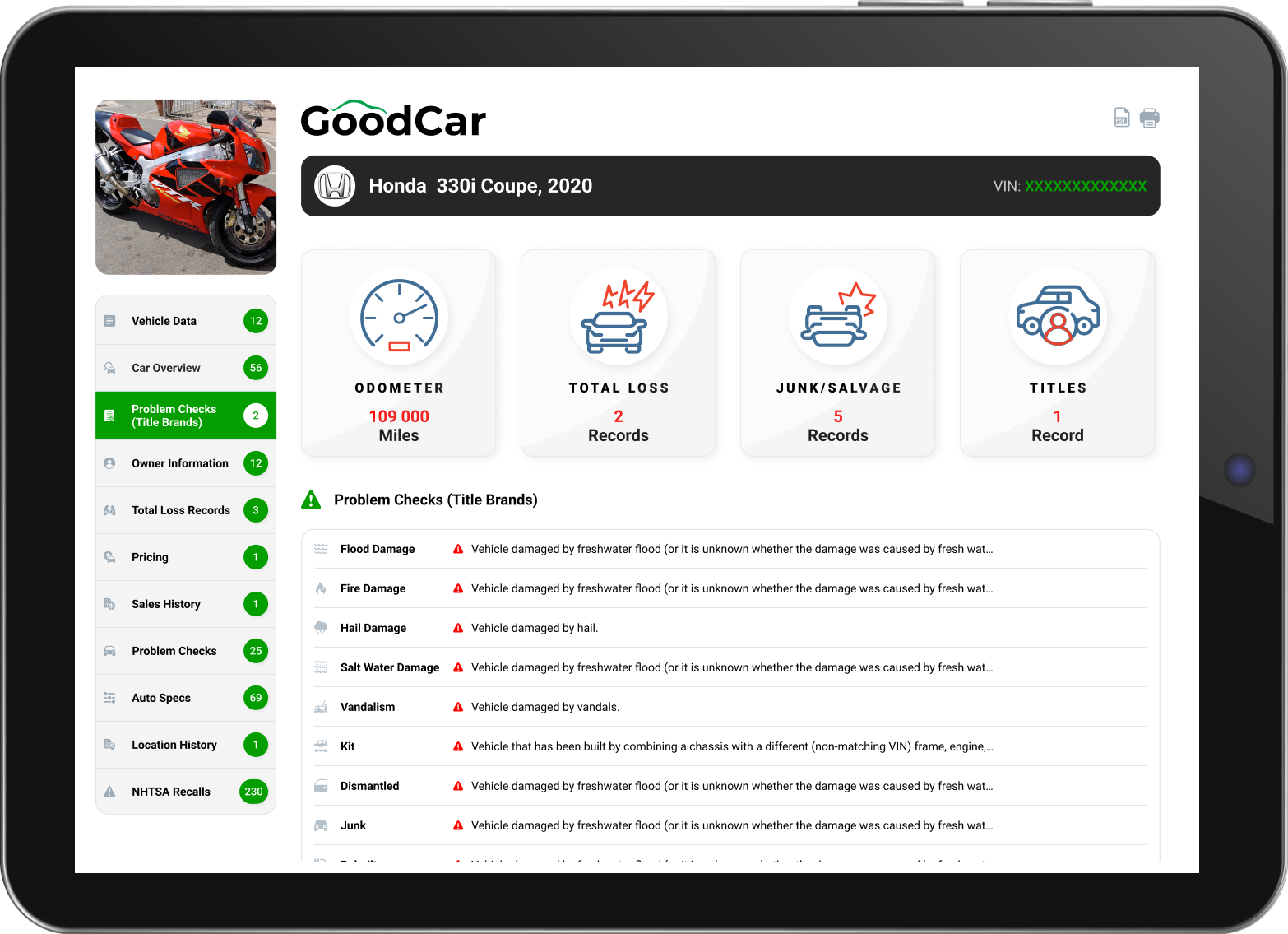GoodCar
Motorcycle History Reports
Know the motorcycle you own, want to buy, or sell!
-
Accidents
-
Values
-
Title Records
-
Recalls
-
Problem Checks
-
Specs
-
Sales History
-
Odometer
-
Salvage Records
Get Your Motorcycle's History Report
Know the Motorcycle you own, want to buy, or sell!
Unlock your motorcycle’s complete history Instantly with a Free VIN Check from GoodCar. Never buy any motorcycle or dirt bike without knowing every piece of relevant information available on that bike. Buying a motorcycle, whether it is your first or twentieth, is always a wondrous occasion filled with every emotion imaginable.
Start your ride with the best possible insights and knowledge on the machine beneath you, combined with the exhilaration you will feel forever. Get a FREE GoodCar Motorcycle VIN Check.
What is a Motorcycle VIN?
Motorcycle VINs are among the most potent numbers any bike enthusiast will encounter. They are unique 17-digit alphanumeric characters laid out in a specific sequence, describing the bike’s history. Using the GoodCar VIN Check service, owners and prospective buyers can input the code into the application and receive a complete telling of every significant event that has happened to that specific motorcycle from day one.
In 1981, the NHTSA required every on-road passenger vehicle to have a 17-digit code. This included cars, trucks, motorcycles, ATVs, dirt bikes, and everything in between. European manufacturers use a similar system but one that is less stringent than the NHTSA guidelines.
On the vast majority of motorcycles, the VIN is located on the engine and frame. The last six digits are the frame number and are located to the right of the headstock tube, where the forks go through and underneath the throttle. The VIN is stamped heavily into the frame.
Engine VINs on your motorcycle are usually located close to the bottom of the cylinder. Some locations are behind the front headlight.
Motorcycle VINs follow the same format as all other passenger vehicles, according to the NHTSA guidelines.
- 1
- F
- T
- 8
- W
- 3
- D
- T
- 4
- E
- B
- c
- 3
- 8
- 8
- 9
- 9

Harley Davidson VIN
The 17-digit VIN for a HOG is heavily stamped on the right front of the frame near the steering head. A label with the same information is attached at the same location. The VIN on a Harley-Davidson engine is usually stamped at the base of the rear cylinder on its right side. The engine code includes motorcycle type, engine type, market configuration, model, and year, along with the sequential build number.

Yamaha VIN
Yamaha and other motorcycle manufacturers place their VINs on parts of the bike that will never be replaced. The exact location varies by model and year. A Yamaha motorcycle, ATV, and snowmobile VINs are placed in any of these four locations.
- The steering neck is the likeliest spot for the Yamaha VIN. This is where the front forks connect to the frame. There may be a plate or numbers etched directly into the frame near the handlebars.
- The second location may be the frame’s down tube, the vertical part of the frame from the steering neck to the engine.
- On newer models, Yamaha locates the number on the right side of the frame near the engine block or footpeg.
- The least likely location is the VIN stamped on a plate somewhere on a highly visible body panel.

Honda Motorcycle VIN
The Honda VIN is stamped on the right side of the headstock near the steering stem. The second location is usually on the left side of the bike, on a metal tag just above the engine, at the frame.

Kawasaki VIN
The manufacturer places the VIN on its motorcycles at the steering head below the handlebars. The frame number or VIN is located on the steering tube if it was manufactured after the NHTSA’s guidelines of 1981. Any bike manufactured before 1981 will have only a ten-digit number. Kawasaki’s 17-digit engine VIN will be positioned on the right-side engine case, on top of the clutch cover.
Why You Need a VIN Check When Purchasing a Used Bike
The NHTSA established the 17-digit VIN to eliminate the massive confusion among the world’s automakers. Until 1981, each builder had its way of numbering production vehicles without regard to any other motorcycle builder. As a result of the standardization, consumers now have the means of checking any used passenger vehicle for a host of issues before buying a car, motorcycle, truck, SUV, and more.
Reasons to order a VIN Check:
- Odometer fraud is one of the most insidious crimes against any passenger vehicle. A motorcycle may show excessive wear and tear that does not match the year and its stated mileage. A VIN check can uncover whether the mileage is the correct number or the seller has fraudulently rolled back the odometer.
- It has become much easier to order fake title and registration documents in neighboring states and sell a stolen bike that looks legitimate to any buyer. VIN checks uncover title issues with a prospective motorcycle, along with any undisclosed liens the seller forgets to mention. A salvage title tells the buyer the bike has had significant damage, and its insurance company has deemed the bike to possess no value.
- Wrecks, minor crashes, and total losses on motorcycles are now easier than ever to conceal from a potential buyer. A completely legal title and registration docs from another state usually convince the easy mark to overlook anything that may seem odd and do not line up, instead buying that beautiful bike right in front of them. Always use the GoodCar VIN Check service to make certain hidden facts affecting value and safety are brought to light.
Motorcycle VIN Lookup Reports: What’s Included
A VIN lookup report can be a single page or several, depending on the year, make, model, and the number of miles on the odometer.
Important information:
- Accident reports detail the time and severity of the accident. If the bike is a total loss, as determined by the insurance company, the title is switched over to Salvage or Rebuilt.
- Odometer readings from each event since the bike has existed. Owners usually return to the original dealer for the bike’s first checkup and then to independent mechanics. By law, the VIN and odometer are required to be on every receipt. Make sure the timelines of sales and service visits match up with the odometer reading. Older bikes often have analog controls, which are easy to roll back.
- Loans and liens are reported in the GoodCar VIN Check. Owners are notorious for failing to mention small, inconsequential liens, so be wary of this line item.
- Quality decoding sites offer vital pricing information such as wholesale, trade-in value, and retail pricing. Motorcycle specifications are always an interesting part of any report. Recalls affecting value should be examined closely.



